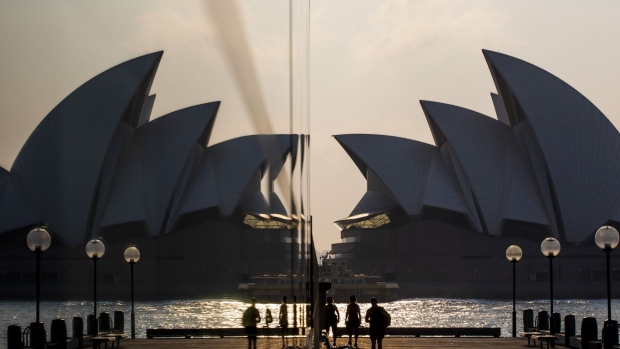(Bloomberg) -- Australia’s central bank considered cutting interest rates at its latest meeting, but decided instead to hold and monitor the impact of earlier easing amid concern that households were being spooked by very low borrowing costs.
In minutes of its Nov. 5 meeting released in Sydney Tuesday, the Reserve Bank said the board recognized the “negative effects” of lower rates on savers and sentiment. It kept the cash rate unchanged at a record-low 0.75%.
“A case could be made to ease monetary policy at this meeting,” the RBA said. The board “also discussed the possibility that a further reduction in interest rates could have a different effect on confidence than in the past.”
The central bank has cut rates three times since June as it tries to spur hiring and investment to accelerate growth in an economy that has slowed sharply in the past 12 months. Yet so far, only the housing market has responded as usual to lower rates, with consumption remaining tepid and confidence weak.
Still, the cuts have allowed the board to keep a lid on the currency at a time when the Federal Reserve was easing -- both the RBA and Fed lowered rates by 75 basis points this year. The U.S. has since signaled that it’s on hold, giving Governor Philip Lowe some breathing room on when to deploy his remaining conventional ammunition.
The Australian dollar declined after the release, trading at 67.93 U.S. cents at 11:37 a.m. in Sydney from 68.06 cents just before the minutes were published.
“Global financial markets were signaling a decline in pessimism, which, if sustained could lead to better-than-expected outcomes for the global economy,” the RBA said. It decided “the most appropriate approach would be to maintain the current stance of monetary policy and to make another full assessment once more evidence of the effects of the earlier monetary easing had become available.”
Weak Wages, Jobs
Since the meeting, salary and employment data have both coming in weaker than forecast, with wages rising an annual 2.2% and unemployment climbing to 5.3% as the economy shed jobs for the first time in over a year. The RBA is trying to return inflation to its 2%-3% target and needs the jobless rate to fall to spur wage gains and push up consumer prices.
Traders are pricing in a chance of another quarter percentage point cut in the first half of next year that would take the cash rate to 0.5%. Lowe had said that the lower bound of policy is probably around 0.25%-0.5%, suggesting that another cut could open the door to unorthodox policy measures.
The central bank reiterated today that “it was reasonable to expect that an extended period of low interest rates would be required in Australia to reach full employment and achieve the inflation target.” The bank also repeated it was prepared to ease policy further if needed.
Lowe has been pressing the government to lift spending to bring fiscal policy in line with monetary policy. But the government has so far resisted as it aims to return the budget to surplus.
The RBA forecast “moderate” economic growth for the third quarter that ended in September. Spare capacity is likely to remain in the labor market “for some years,” it said.
(Updates with currency in sixth paragraph.)
To contact the reporter on this story: Michael Heath in Sydney at mheath1@bloomberg.net
To contact the editors responsible for this story: Nasreen Seria at nseria@bloomberg.net, Victoria Batchelor
©2019 Bloomberg L.P.








